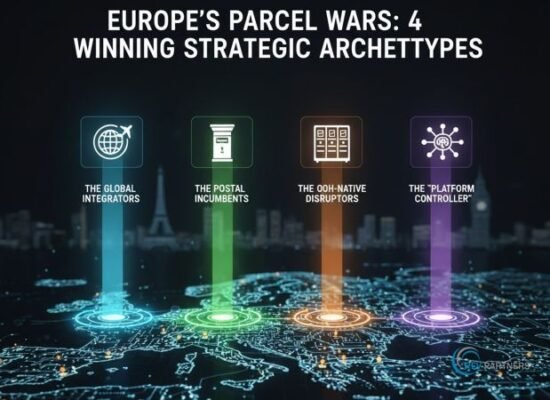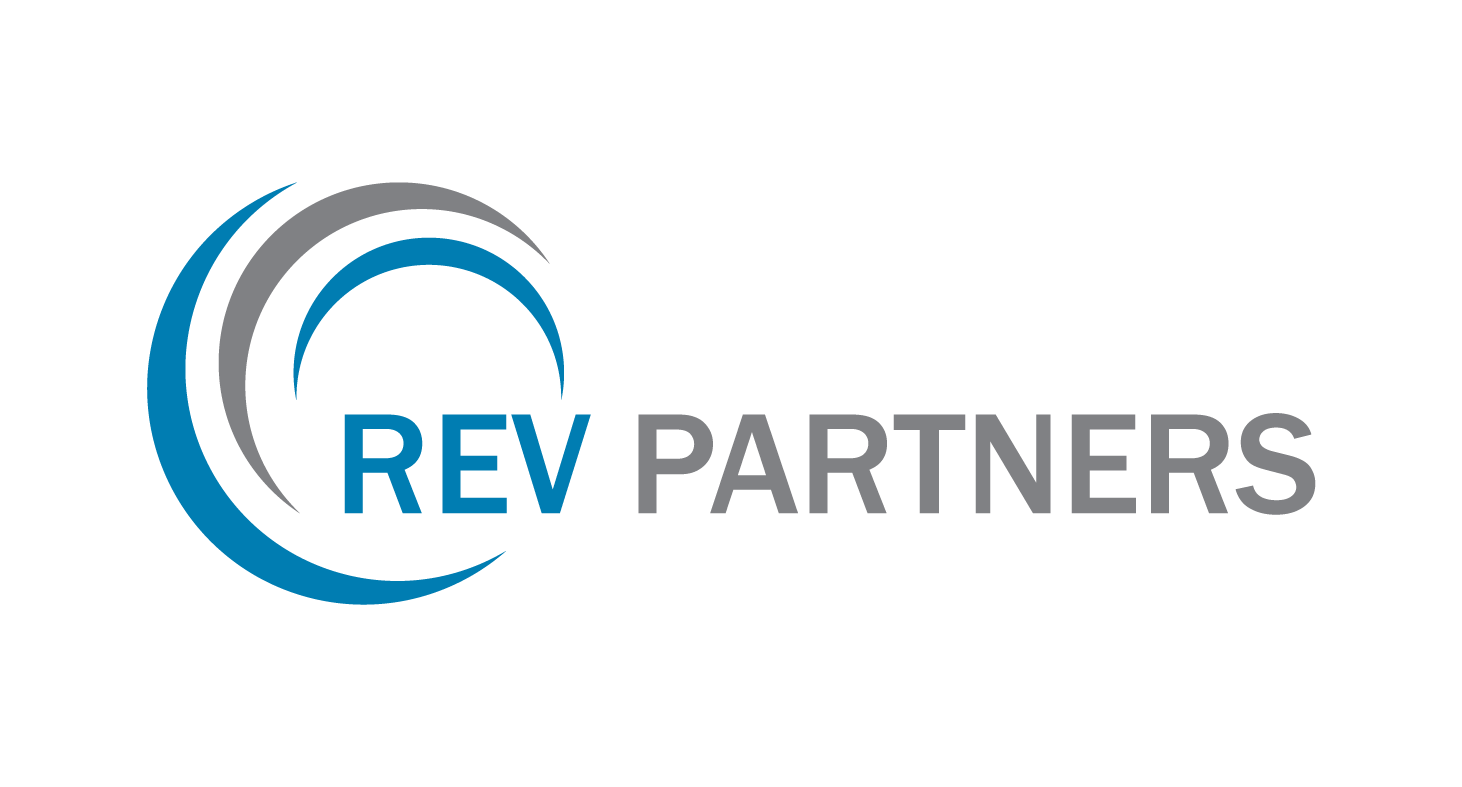EUROPE’S PARCEL WARS: 4 WINNING STRATEGIC ARCHETYPES
The European parcel market is at a strategic inflection point. The forces of B2C e-commerce, margin compression, and the disruptive economics of Out-of-Home (OOH) delivery are not merely shifting the landscape – they are fracturing it. The legacy “one-size-fits-all” network, built for B2B scale, is no longer a sustainable advantage. It has become a high-cost liability in a market defined by low-margin, high-volume residential deliveries.
For boards and executive committees, this presents a stark reality: your current strategic configuration is likely becoming obsolete. The fundamental “ways to win” have changed. Success is no longer a function of just owning assets but of deploying the right assets, in the right configuration, for a specific customer segment.
My observations is that a “great fragmentation” is underway, where value is migrating to focused, disciplined operators. Attempting to be everything to everyone is a direct path to margin erosion and strategic irrelevance.
The critical question is no longer “How do we grow?” but “Which specific archetype are we configured to be?” My experience suggests that there are five successful archetypes that are built to win in this new environment.

THE GLOBAL INTEGRATORS (DHL, UPS, FEDEX)
This model wins by leveraging its legacy, asset-heavy global air and freight network, integrating it with a multi-modal (to-door and OOH) last-mile solution. It defends its value by serving high-margin B2B and premium B2C segments. These global integrators are the asset-heavy incumbents, possessing unparalleled global, end-to-end networks historically optimized for high-margin B2B and international express services.
- Strategic Challenge: Their core B2B segment is stagnant, and their high-cost asset base, built for enterprise-level service, is ill-suited for the low-margin, fragmented B2C mass market.
- Strategic Response (Case: DHL in Poland): DHL’s response to the OOH threat from InPost is a masterclass in “co-opetition.” Rather than attempting to build a competing Automated Parcel Machine (APM) network from scratch – a high-cost, high-risk endeavor – it has formed a strategic alliance with its “co-opetitor,” Cainiao (Alibaba). This JV involves a €60 million co-investment to merge their existing lockers and build one of Poland’s largest new OOH networks. DHL (the “Integrator”) gains access to a world-class OOH network funded by a partner. Cainiao secures access to DHL’s premium infrastructure and a guaranteed, low-cost delivery network for its AliExpress parcels. They both win, with their combined force targeting the market leader, InPost.
THE POSTAL INCUMBENTS (LA POSTE, DEUTSCHE POST, ROYAL MAIL)
- The “national champions,” historically protected by their scale and, in many cases, a universal service obligation (USO).
- Strategic Challenge: They suffer from a “dual-network” problem. They must manage the terminal decline of their legacy, high-fixed-cost mail business while simultaneously trying to pivot and compete in the hyper-competitive, low-margin parcel market.
- Strategic Response (Case: La Poste/Geopost): La Poste (via its Geopost/DPD arm) is not a sleeping giant. It has aggressively embraced an OOH-centric strategy, recognizing that network control is the key to defending its B2C market share. Geopost now controls one of Europe’s largest OOH networks, with 100,000 OOH points (a mix of PUDO and APM lockers). Unlike DHL’s “partner” strategy in Poland, La Poste has pursued a “build and acquire” strategy, exemplified by its acquisition of Mondial Relay. This move cements its control over the physical delivery points, a critical moat in the French market.
THE OOH-NATIVE DISRUPTORS (INPOST)
This model wins through an unassailable, asset-heavy OOH network in a core region. By achieving massive operational leverage, one driver can often deliver 10x the parcels of a traditional route. This is the “new” asset-heavy model. These companies are not pivoting to B2C; they are purpose-built for it, with OOH economics at their absolute core.
- The InPost Flywheel: InPost’s success in Poland provides the definitive blueprint for B2C profitability. Its model is a powerful, self-reinforcing flywheel:
- Invest in Density: Build an unparalleled APM network (over 27000 APMs in Poland, capturing significant market share).
- Drive User Adoption: This extreme density creates unmatched convenience, which in turn drives consumer preference (very high NPS; most Polish online shoppers name lockers as their preferred method).
- Create a Flywheel: This overwhelming user preference “locks in” major e-tailers (like Allegro), which drives massive, consolidated volume into the network.
- Result: Unprecedented Profitability: This consolidated volume, combined with driver efficiencies (up to 10x that of home delivery), creates industry-leading operational leverage, resulting in a staggering Adjusted EBITDA margin in its home market.
- The merger of Instabox (an APM specialist) and Budbee (a tech-driven home delivery specialist) to form Instabee is an attempt to build a similar OOH-centric powerhouse to challenge incumbents in the Nordic and Benelux markets.
THE “PLATFORM CONTROLLER” (E.G., AMAZON, CAINIAO)
This model wins by owning the customer and the data. It orchestrates the assets of other players—in effect, controlling the network without owning it – thereby capturing the margin and forcing traditional carriers into a price war. These platforms are the industry’s ultimate paradox: they are simultaneously the largest customers and the most dangerous long-term competitors.
- Amazon’s Three-Pronged Attack: Amazon is methodically disintermediating its carrier partners.
- Amazon Logistics (as a Carrier): Amazon is no longer just a customer; it is a dominant carrier in its own right. In Germany, it is said to be #2 parcel carrier and, in the UK, it’s a top-tier player. It has successfully shifted from “key customer” to “key competitor.”
- “Shipping with Amazon” (SWA) (as a 3PL): This external-facing service offers Amazon’s logistics network to sellers for their non-Amazon parcels, placing it in direct competition with DHL, DPD, and FedEx for their core business.
- Multi-Channel Fulfillment (MCF): This service allows sellers to use Amazon’s FBA network to fulfill orders from off-Amazon channels (e.g., a seller’s own brand.com website). Crucially, this service ships in unbranded packaging, removing a key barrier to brand adoption.
- Cainiao’s “Asset-Light” Infrastructure Play: As seen in the Poland/DHL deal, Cainiao’s strategy is to be the “data-driven” partner. It uses its “asset-light” data supremacy to co-fund and orchestrate physical infrastructure, building a pan-European network without the full cost of ownership.
NEED FOR STRATEGIC CLARITY
The lines are blurred. Global Integrators are partnering with Platforms” Postal Incumbents are acquiring OOH Disruptors. Platforms are building assets, and Aggregators are building the software layer that connects them all.
This is a dynamic, high-stakes game where the battle is no longer for assets but for control points. Is your control point your physical network density (InPost), your global B2B infrastructure (DHL), your national mandate (La Poste), your customer-platform dominance (Amazon), or your SME software interface (Sendcloud)?
You cannot be all five. Attempting to do so will result in a high-cost, low-margin, operationally complex “stuck in the middle” position. The mandate from the board must be for a clear, courageous, and disciplined strategic choice.
The time for incrementalism is over. If you are grappling with which archetype to pursue and how to configure your organization, assets, and technology for success, get in touch. We help leaders make these foundational decisions and execute the transformations that follow.
——————————————————————————————————————————-
ABOUT REV PARTNERS
REV Partners. Business Transformation Experts. Digital Transformation Experts. We are a Management Consulting & Advisory firm. We help Fortune 500 & Private Equity clients address the most pressing issues related to Transformation, Strategy, Operations, Organization and Digital. We can also provide experienced experts as Interim “Chief Transformation Officer” or equivalent, to accelerate, lead and execute ambitious Business Transformation or Digital Transformation programs. If you or your organization need support, please contact us, follow us on Twitter or Email us at: meet@revpartners.com.
© REV Partners. All Rights Reserved.

